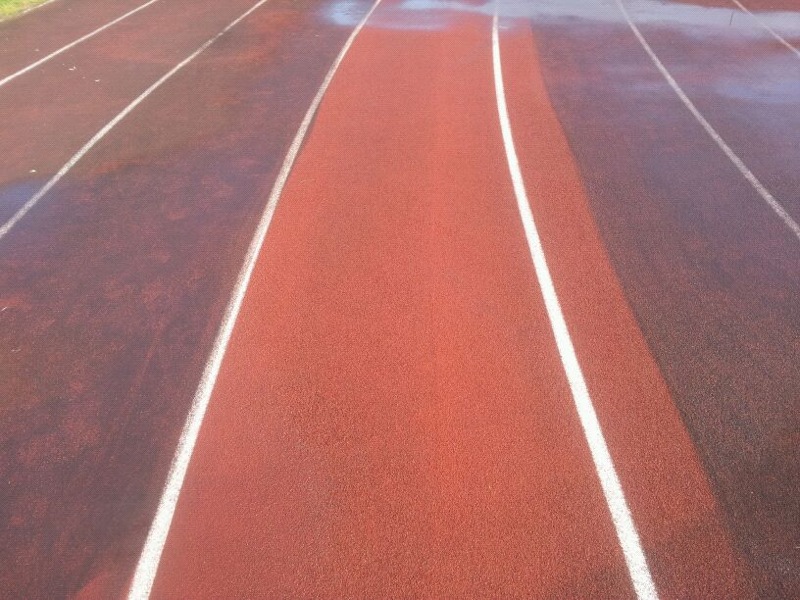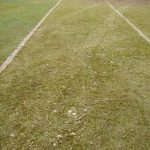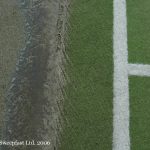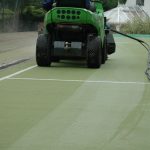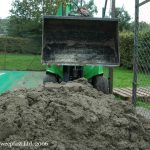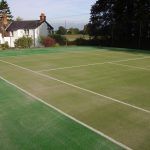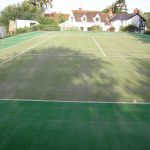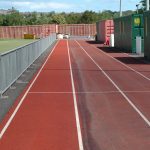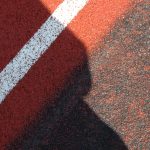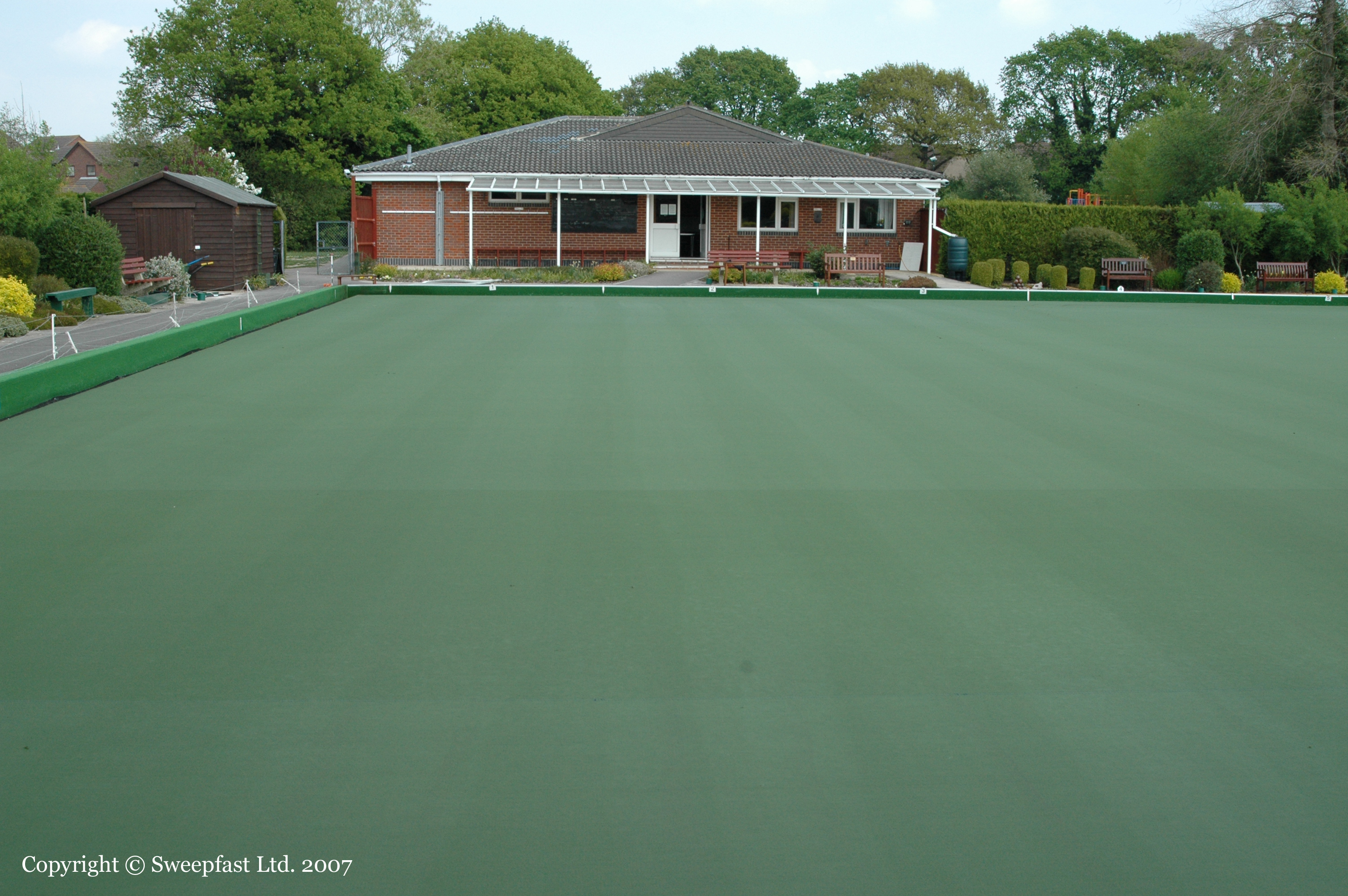Month: May 2012
Tennis Court Cleaning
With the summer promising to arrive sometime soon, and thoughts of playing tennis again firmly set in your mind, you walk out into the garden with raquet in hand only to find your beautiful artificial grass tennis court covered in leaves, blossom etc etc. With the only tools at hand being a large brush you start the arduous task of brushing the court, some 550 sq m of it, to enable play to take place. The after effects of brushing artificial grass surfaces look ok, but close inspection will reveal a lot of broken up leaf litter and other debris pressed into the infill, which is less than desirable and will cause long term problems encouraging moss growth and eventually leading to drainage failure leading to a tennis court looking a little like this:
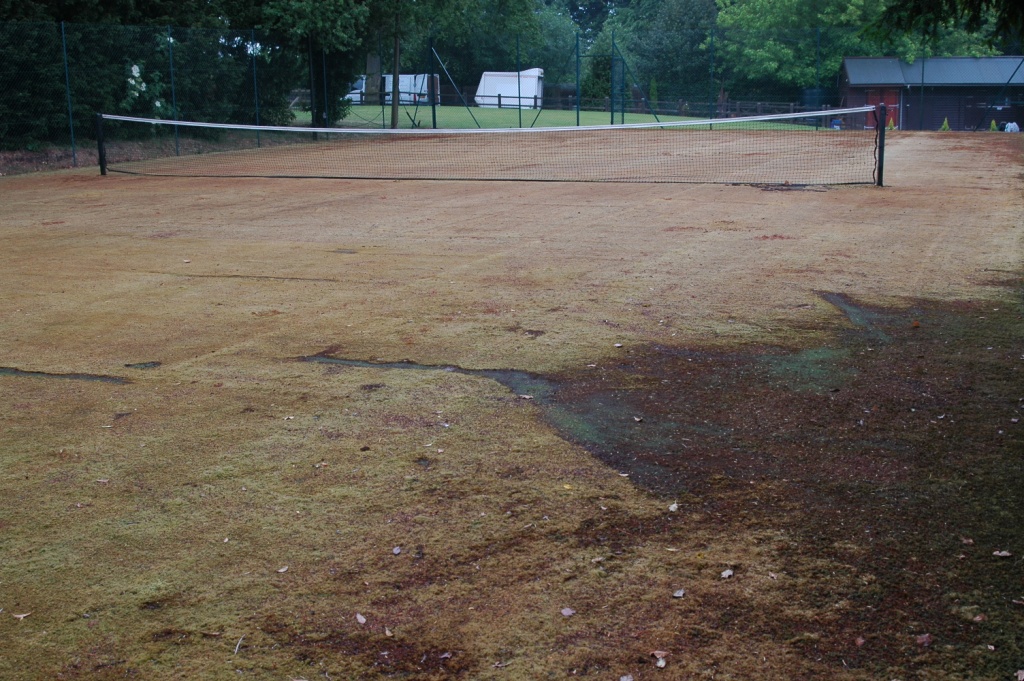
This court was particularly bad with moss up to 25mm deep over most of the surface, it certainly looked as though it needed mowing!!
A few days later it looked like this:
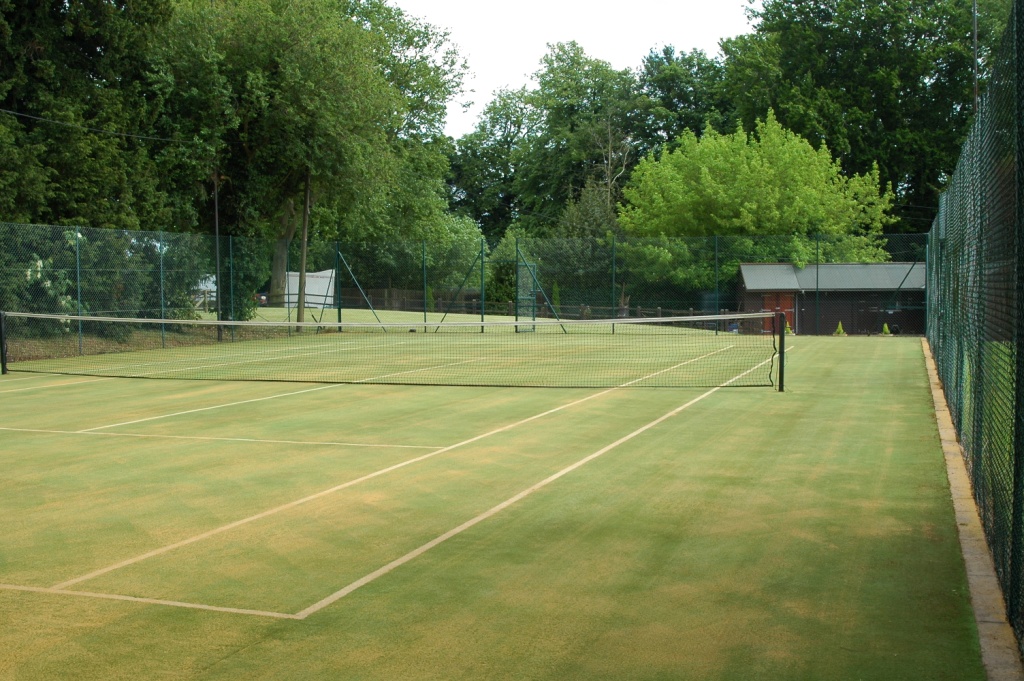
After play had resumed on it all it needed was a sand top up and it was back to as new condition, but the most important question from the customer was how do I prevent this from happening again? The answer to this in essence is quite simple but it does need pressing home, MAINTENANCE!! If the facility, which had cost a lot of money to install in the first place, had been maintained from the outset this situation would never have arisen, and the golden rule for maintaining all outdoor sports surfaces is Cleanliness. The first weapon for the groundsperson or owner is the Cleansweep cleaning mat, with this simple yet effective tool you will be able to clean and remove litter from an artificial grass tennis court in just a few minutes. The Cleansweep will sweep, remove leaf litter, twigs, blossom, seeds and other biological debris from the surface, then at the same time it is working back in the sand that has been brought to the top of the surface leaving behind a clean even tennis court. All this in one simple machine makes regular maintenance of sand filled artificial grass tennis courts so easy it becomes a pleasurable regular task with satisfying end results.
The next procedure to put in place is to treat the surface regularly for moss control, with the restrictions now on most chemicals that were effective on moss and algae some of the surface cleaner chemicals are suitable to apply regularly without causing environmental issues. One such product is Algon, this product works on contact with the plant and the process starts rapidly with noticeable effects visible within a couple of days. Once the kill has been completed and the moss is brown it can be brushed from the surface, this can be done by hand but again it is an arduous task, and a solution is to use a powerbrush. The simplest and cheapest of these is the Texas Handysweep 600TG, this will rapidly powersweep dead moss from the surface leaving it clear for another application of moss killer.
With all this in place the last course of action is to book in a deep clean service once a year during the driest period to remove debris, dead moss and broken fibre from deep down in the carpet where brushing with the Cleansweep and the Handysweep can’t reach. This process is carried out with a Hoerger SKU machine either driven by a tractor or mounted on an Avant machine and driven hydraulically.
As long as these procedures are followed strictly and carried out under the right conditions the artificial grass tennis court should stay in pristine condition for many to come.
Artificial Grass Cleaning
Artificial Grass Cleaning
When William Blake penned the phrase “in England’s green and pleasant land” I don’t think he had an old Astroturf tennis court or synthetic grass hockey pitch. After, in some cases, just a few years they can turn into a nightmare for the owner, with brown sludge in patches all over and dead moss deeply rooted into the sand infill. For the owner of such a facility it must seem as if all is lost, as every effort to brush the surface clean produces no noticeable effect with the sludge appearing again at the first heavy downpour, of which there has been more than just a few this Spring. Then when they do get a break in the weather and succeed in killing off the moss and algae it all re appears with, wait for it, yes even more rain!! I can imagine the feeling of despair as the owner of a beautiful country house looks over the garden in the morning, from their kitchen window, and sees the tennis court like a blott on the landscape.
Sweepfast have had more than just a few such situations to deal with, and I’m sure more than once has a potential customer been scornful that nothing can be done and that replacement is the only way forward. This is brought on by installation companies only interested in selling a new surface and condemning the old one to the grave, or the skip!! And there’s another valid point to be made here, as we’re all doing our best to minimize landfill and re-cycle, why is it that old surfaces like these are ripped up and sent to the tip when with a bit of effort and money they can be back in service again in almost as new. The thing with many private synthetic grass tennis courts and a lot of synthetic grass hockey pitches is that as long as the seams are intact they will show very little signs of wear, and the only issue is the infill which is contaminated and refuses to allow any rain water to pass through.
Sweepfast have developed this Hydrofast System of refurbishing these surfaces using high pressure water which is fed into a machine that travels up and down the court or pitch very slowly driving out the infill, and contamination and removing it from the surface and even washing the fibres clean as it goes leaving behind an almost as new tennis court or hockey pitch. When the job is just half way through and the customer can see the comparison between the old and the new the difference is just staggering, but the best of all is the look on the owners face when their beautiful artificial grass sports facility handed back looking pristine, is extremely rewarding.
Once completed these sand filled surfaces can be easily maintained by a little effort every week or every day during Autumn and Spring, with such tools as the Cleansweep which will enable the user to clean a tennis court of litter, leaves, blossom, twigs etc etc in just 10 minutes, then use of a either a hand pulled weighted dragbrush or for the larger surfaces a towed weighted dragbrush, then regular moss and algae treatment with a suitable chemical will go a long way to keeping it free of contamination for years to come. Then once yearly it must be deep cleaned by a contractor using such machinery as the Hoerger SKU to remove deeply embedded debris and lift the fibres upright again.
Sweepfast can be contacted on 0121 747 9255 for a free site visit to discuss a rescue package to restore your facility.
See the gallery below for examples of the whole process:
Running Track Cleaning
Running Track Cleaning
More images from the Sweepfast running track cleaning service are available to view at http://www.flickr.com/photos/sweepfast/sets/72157629768718224/ . These show the Hoerger KBR system working at Gateshead International Stadium last year. The track was particularly contaminated from footfall off the natural grass football pitch in the infield across the track to the changing rooms.
It took about 3 days to clean this effectively but the results were clearly impressive, as you can see below
Deep Cleaning Synthetic Bowling Greens
Over the last few years synthetic bowling greens have grown in popularity allowing club members to play competitive bowls most of the year round, excluding days when the green is covered with frost or deep snow. Performance of these surfaces is improving with various shock pads giving control of the speed of play. These types of synthetic grass surfaces have a distinct advantage over natural grass surfaces which require a high standard of maintenance to retain the playing characteristics, where a synthetic grass surface is not so demanding, at least in the first few years.
However with time all of these surfaces are beginning to look tired and impossible to play on with moss and algae growing all over the surface making even walking on them a hazardous operation. Add this to the absorption of biological contamination then you quickly have a slippery and unsightly surface developing which is no good to the club and extremely expensive to replace.
The Hydrofast System (see http://www.sweepfast.com/index.php?webpage=synthbowlsrefurb.html) from Sweepfast can easily and economically remedy this problem in just 2 days with the removal from the surface of the contamination, moss and algae, leaving behind a spanking clean bowling green that will be a pleasure to play on once again and, with some maintenance, stay this way for many years to come.
Athletics Track Cleaning
Polymeric running tracks are constantly bombarded with biological contamination from airborne sources, such as trees, grass, birds and also from footfall from sporting participants. This build up can cause the surface to lose its grip factor and become slippery. Spraying with a chemical to kill off the moss and algae spores will go some way to alleviate the problem, but the long term solution is to deep clean the running track and remove all the contamination. This process requires some specialist equipment such as the KBR system from Horger, http://www.sweepfast.com/index.php?webpage=deep_clean_polymeric.html and demands a large volume of clean water. However the end results are most spectacular and can transform the most unappealing surface into one which is a pleasure to look at and perform on with safety. To clean a full size running track will take a team about about 3 days to complete, and will most likely require chemical treatment 10 days prior to that. The image below clearly demonstrates the effectiveness of the KBRs ability to remove the contamination and restore an athletics track to its former glory.
